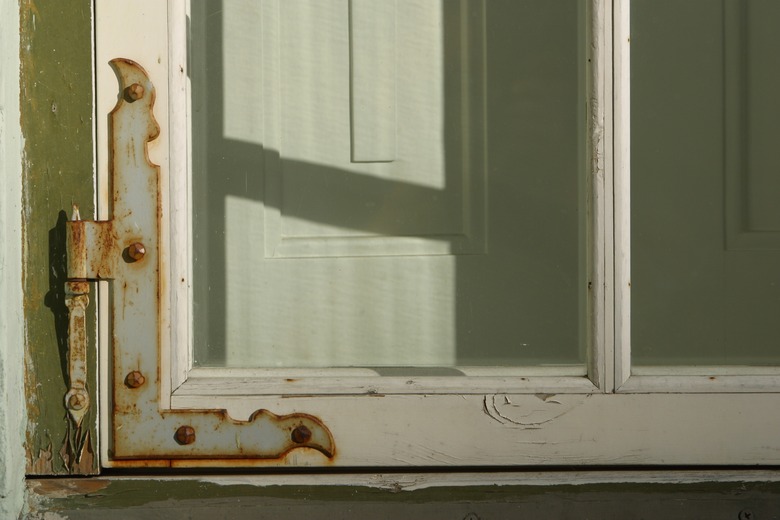Tin Oxide Removal
Tin oxide has several commercial uses. One of the most common is in semiconductor films that can give materials various electrical capabilities. The film also can be applied to windows in order to create better heat insulation. But tin oxide can also cloud windows and other objects, and you may want to remove it.
Tin Oxide
Tin Oxide
Tin oxide is the result of tin rusting. Whereas iron produces the classic rust we are familiar with, tin oxidizes into a completely different material, although the process is the same. Oxygen atoms encounter tin molecules and set up electron exchanges if the oxygen has any electrons to spare. This exchange alters the chemical structure of the tin and eventually creates an entirely different substance–tin oxide, which in its most common form is a dark color.
Tin oxide used for commercial purposes is produced synthetically with tightly controlled chemical processes involving heat and the application of other compounds, which causes the tin to combine with oxygen more quickly and completely than exposure to air would turn it.
Removal Procedures
Removal Procedures
Removing tin oxide from smooth surfaces such as windows can be difficult. You can try scraping the tin oxide off with a razor blade or similar device, but this will be time-consuming and possibly harmful to the object you are cleaning, as tin oxide will probably be tougher than the glass or other metal surface on which it is found. If you decided to attempt this method, which is effective with the thinnest types of tin oxide coatings, be sure to wear protective gloves and a face mask.
You can also try using a combination of zinc powder and hydrochloric acid to eat away at the tin oxide deposits. This requires access to these chemicals and the knowledge of how to use them safely, and even then there are limits. The tin oxide will be etched away, but the other coatings used to apply the tin oxide may not be so susceptible. Therefore, with chemical coatings, this may not be the best method to use.
There are also electrolyte methods that position tin oxide as the cathode in an electrolyte solution. When an anode is added and a current is applied, the oxide can be reversed back to tin and then removed or dissolved.
Cite This Article
MLA
Lacoma, Tyler. "Tin Oxide Removal" sciencing.com, https://www.sciencing.com/tin-oxide-removal-5887887/. 24 April 2017.
APA
Lacoma, Tyler. (2017, April 24). Tin Oxide Removal. sciencing.com. Retrieved from https://www.sciencing.com/tin-oxide-removal-5887887/
Chicago
Lacoma, Tyler. Tin Oxide Removal last modified March 24, 2022. https://www.sciencing.com/tin-oxide-removal-5887887/
